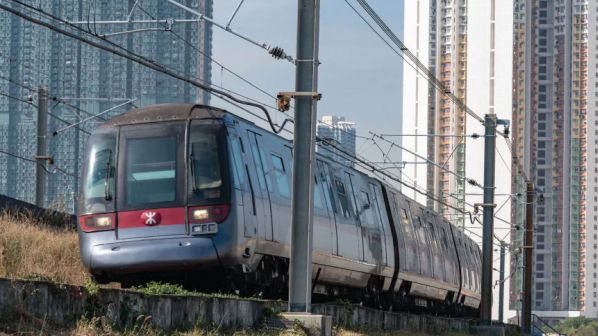MTR has reported total revenue of $HK 47.81bn ($US 6.09bn) for 2022, up 1.3% from $HK 47.2bn in 2021. However, the continuing impact of the Covid-19 pandemic saw profit from recurrent businesses fall by 91.3% from $HK 1.8bn in 2021 to $HK 157m.
Hong Kong transport operations, station commercial and property rental businesses were adversely affected by the fifth wave of the Covid-19 pandemic. In February and March 2022 passenger numbers on Hong Kong services fell to the lowest level seen since the outbreak of the pandemic in early 2020.
The total number of passenger boardings on MTR domestic services was 1.33 billion in 2022, down from 1.42 billion in 2021. The average number of passengers carried by domestic services on a weekday fell from 4.19 million in 2021 to 3.92 million.
MTR reports a “gradual recovery” has been seen as measures to combat the spread of Covid-19 have been lifted.
Profit from property development was up 12.2% at $HK 10.48bn from $HK 9.34bn in 2021. The net profit attributable to MTR shareholders was up 2.9% at $HK 9.83bn from $HK 9.55bn.
MTR CEO, Mr Jacob Kam Chak-pui, says the company made a total loss of $HK 14bn from rail operations over the three years of the pandemic.
“Stepping into 2023, society is gradually returning to normal,” he says “Transport demand from local passengers and visitors is increasing gradually.”
Kam reported that passenger traffic rebounded after Hong Kong reopened its border with mainland China in early January, with domestic ridership at over 90% of pre-pandemic levels.
“Cross-border ridership, including that of the Airport Express and high-speed rail, also reached 50% of pre-Covid levels by the end of February,” Kam says. “Our service is actually gaining traction.”
MTR high-speed services from Hong Kong to destinations in Guangdong Province resumed on March 11, and are due to be followed by routes to Beijing and other destinations in mainland China on April 1.
For detailed data on metro projects in Asia and around the world, subscribe to IRJ Pro.

